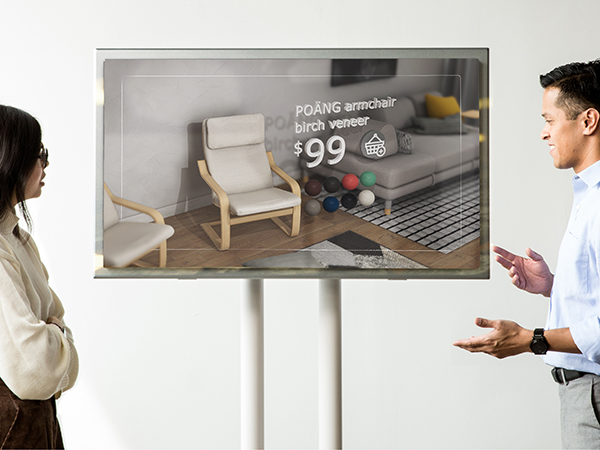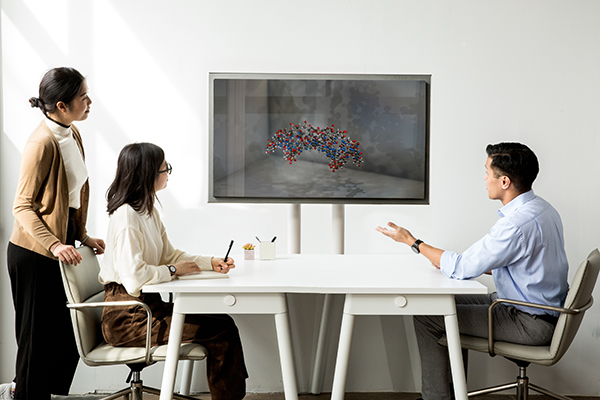
Holographic display maker introduces 32-in. display. Image courtesy of The Looking Glass Factory.
Latest News
November 12, 2019
Looking Glass Factory's first oversize holographic display, the Looking Glass 8K, debuts this week, but the first advanced beta production units are already sold out, according to the company's press announcement.
The large format unit is a new addition to the company's existing portfolio, listing the 8.9-in. and 15.6-in. units.
“Having sold thousands of Looking Glass developer kits over the past year, the company created the Looking Glass 8K to meet the needs of enterprises who were looking for a deeply visceral, genuinely three-dimensional collaborative experience,” writes the company.
The company says it plans to show and demonstrate its 32-in. display by appointment in San Francisco, Tokyo, Brooklyn, and Hong Kong. It's accepting preorders for additional units.

A rivalry to AR/VR?
The holographic displays are a departure from the AR (augmented reality) and VR (virtual reality) systems, but their similar pricing and applications are bound to invite comparison.
Whereas AR/VR head-mounted displays (HMDs) afford users the freedom to move around, the holographic display must remain stationary. With AR/VR, multi-user collaboration will most likely require multiple HMDs (each participant needs to wear a headset). On the other hand, the holographic unit can be mounted on a wall for multiple users to view.
With holographic displays, the effect remains active withing a certain viewing zone (the cone-like region where holograms look most realistic). Therefore, the larger the unit, the greater the viewing area is. For the Looking Glass 8K, the field of view: 40-50 degrees; viewing distance: 1-30 ft; and it can accommodate up to 12 viewers, according to the company.
The Looking Glass Factory offers its 15.6-in. system in a self-contained Pro version, with sufficient built-in computing and graphics power. The rest require an external computing system to power the unit via a cord.
The company targets many of the same industry AR/VR vendors are targeting (such as medical imaging, architecture, manufacturing and engineering) with slightly different applications.
Looking Glass 8K Immersive Display from Looking Glass on Vimeo.
Interaction with holograms
The 15.6-inch all-in-one unit, dubbed The Looking Glass Pro, is touch sensitive; therefore, users can pinch, zoom, and pan the holograms using typical fingertip-driven operations commonly found in mobile tablets.
For others, including the largest 32-in. 8K model, interaction happens via a portable Leap Motion controller (bundled as part of the developer kit).
In comparison to AR/VR content, holographic content is less common. Holographic displays could see higher adoption if there's an easy way to convert CAD models and other 3D content into holograms.
“The Looking Glass 8K operates on optical principles and a software platform that doesn't require any head-tracking or VR or AR headsets, making it ideal for companies that want to collaboratively view or interact with 3D images in the areas of retail, mapping/GIS, medical imaging, and entertainment,” the company points out.
For more, read previous post on The Looking Glass Factory here.
Subscribe to our FREE magazine, FREE email newsletters or both!
Latest News
About the Author
Kenneth Wong is Digital Engineering’s resident blogger and senior editor. Email him at [email protected] or share your thoughts on this article at digitaleng.news/facebook.
Follow DE





